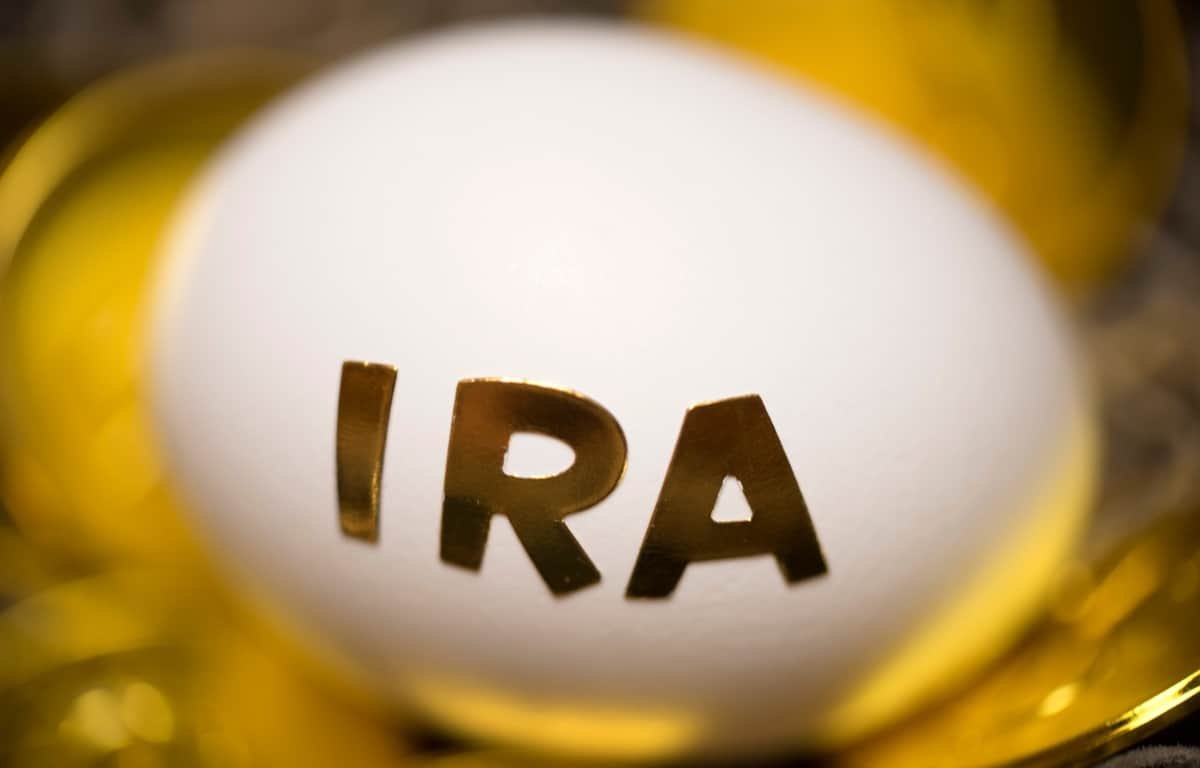How to Convert Your IRA to Gold
Related: What is a Gold IRA?
How Does the IRA to Gold Conversion Happen?
There are two ways to convert an IRA to gold: a transfer and a rollover. A transfer is the movement of money between two similar-type accounts. An example is the transfer of money from one traditional IRA account to another.
A transfer does not entail giving money to the account owner. Instead, a financial institution transfers the money directly to the other account.
On the other hand, a rollover is the transfer of money from one retirement account to another. Usually, this process entails distributing money to the account holder and then depositing that money into a fresh retirement account. In other words, the funds go through you.
You would start a rollover, for instance, if you had a 401(k) with your present company and decided to leave your employment and transfer your 401(k) money to an IRA. When you receive the funds, you would have 60 days to put the money into another plan or IRA account.
What are the Steps to Transfer Your IRA to Gold?
Follow the given steps to turn your IRA into physical gold.
1. Choose a Reputable Custodian
First and foremost, it is essential to research and choose a reputable IRA custodian that allows investments in precious metals. When selecting an IRA custodian, ensure that they have a proven track record of providing quality services to their clients. A good place to start is by reading reviews and doing your due diligence before selecting a custodian.
2. Open a Self-Directed Account
Once you have chosen an IRA custodian, the next step is to open a self-directed IRA account. A self-directed IRA account allows you to invest in alternative assets such as gold, in addition to traditional assets like stocks and bonds. You will need to fund your self-directed IRA account with cash or transfer funds from an existing IRA or 401(k) account.
3. Choose the Gold You Want to Buy
The next step is to choose the gold you need, whether coins or bars or a few other precious metals for that matter. Make sure that you have a reputable dealer with a proven track record of providing high-quality gold. You will then purchase the gold coins or bars that you want to hold in your IRA account.
4. Store the Gold in an Approved Depository
After purchasing the gold, you cannot store it in your own home, so you will need to store it in an approved depository that meets the IRS’s requirements for IRA investments. Your IRA custodian can provide you with a list of approved depositories. It is important to note that the custodian is responsible for managing the assets in your account, including the gold.
5. Monitor Your Gold Investment
Gold prices can fluctuate, so it is important to monitor your investment regularly to ensure that it is performing as expected. Consult with a financial advisor to make sure you’re on track to meet your retirement goals. It is also important to ensure that investing in gold aligns with your investment goals and risk tolerance.
Why Convert IRA to Gold?
Converting an IRA to gold can provide several benefits for investors who are looking to diversify their portfolios and protect their assets. Here are some of the reasons why someone might choose to convert their IRA to gold:
- Hedge against inflation: Gold is considered a hedge against inflation because its value tends to increase as the purchasing power of the dollar decreases. This means that holding gold in your IRA can help protect your retirement savings from inflation and maintain its value over time.
- Portfolio diversification: Gold is a non-correlated asset, meaning it does not move in the same direction as stocks or bonds. Adding gold to your IRA can provide diversification and potentially reduce your overall portfolio risk.
- Safe haven asset: Gold is often considered a safe haven asset because it tends to hold its value during times of economic uncertainty or geopolitical instability. Holding gold in your IRA can provide a sense of security and protection against market volatility.
- Potential for growth: The price of gold can fluctuate, and historically, it has shown the potential for growth over the long term. Holding gold in your IRA can potentially provide growth opportunities for your retirement savings.
- Preservation of wealth: Gold has been a store of value for thousands of years, and it has maintained its purchasing power over time. By holding gold in your IRA, you can potentially preserve your wealth for future generations.
As you can see, converting an IRA to gold can provide several benefits for investors who are looking to protect their assets and diversify their portfolios. While there are some risks associated with investing in gold, careful research and planning can help mitigate these risks and potentially provide growth opportunities for your retirement savings. As with any investment, it’s important to consult with a financial advisor to ensure that investing in gold aligns with your investment goals and risk tolerance.
Are There Any Fees for IRA to Gold IRA transfer?
Yes, there are typically fees associated with transferring or rolling over an IRA to a gold IRA. These fees can vary depending on the financial institution and the type of IRA being transferred. Here are some of the fees that you may encounter when transferring an IRA to a gold IRA:
- Custodian fees: A gold IRA requires a custodian to hold and manage the physical gold. The custodian may charge an annual fee for their services, which can range from a few hundred dollars to over a thousand dollars.
- Setup fees: Some custodians may charge a one-time setup fee to establish the gold IRA account.
- Storage fees: Gold must be stored in a secure facility, and custodians typically charge a fee for storage. This fee can vary depending on the amount of gold being stored and the type of storage facility.
- Transaction fees: There may be fees associated with buying and selling the physical gold in the IRA. These fees can include commissions, bid-ask spreads, and other transaction costs.
It is important to carefully research and compare the fees associated with different custodians and gold IRA providers before making a decision. While fees can add up over time, it is also important to consider the potential benefits of holding gold in your IRA, such as diversification, protection against inflation, and potential for growth.
It is also important to note that some custodians may offer fee waivers or discounts for certain types of accounts or larger account balances. It is always a good idea to ask about any potential fee waivers or discounts that may be available to you.
Wrapping It up
Converting an IRA to gold requires careful research and planning. By following these steps and working with reputable IRA custodians and gold dealers, you can add gold to your retirement portfolio and potentially diversify your investments. Be sure to make informed decisions and consult with a financial advisor to ensure that investing in gold is appropriate for your retirement goals. With the right strategy, you can safeguard your retirement savings and enjoy the benefits of investing in gold.
If you need a reliable Gold IRA (or silver IRA) company to work with and make the process easier, check out Augusta Precious Metals.







